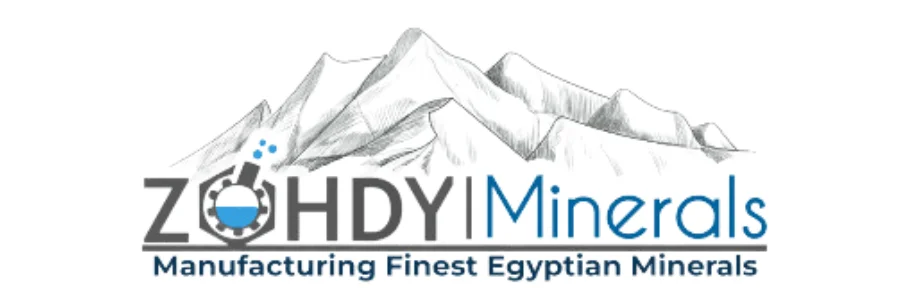Uses of Hydrated Lime: A Comprehensive Guide
Hydrated lime, also known as calcium hydroxide or slaked lime, is a versatile material used in a variety of industries and applications. This article explores the many uses of hydrated lime (HL), from construction to agriculture, and outlines why it’s such a valuable resource. Let’s delve into the properties, applications, and advantages of HL, and discuss key considerations for its use.

Table of Contents
Introduction to Hydrated Lime
What is hydrated lime?
Hydrated lime is a chemical compound with the formula Ca(OH)₂, obtained by adding water to quicklime (calcium oxide). This process, called “slaking,” results in a fine white powder with strong alkaline properties. HL is known for its high reactivity, making it suitable for a range of industrial applications.
Properties of hydrated lime
HL has several unique properties that make it a versatile material. It’s highly reactive, with a strong alkaline nature. It has a high calcium content, is soluble in water, and can neutralize acids effectively. These characteristics enable its use in a variety of industries, from construction to environmental remediation.
Production Process of Hydrated Lime
The production of hydrated lime involves a straightforward process:
- Calcination: Quicklime is produced by heating limestone (calcium carbonate) to high temperatures, driving off carbon dioxide and leaving behind calcium oxide.
- Slaking: Water is added to quicklime, resulting in a chemical reaction that produces HL , a fine white powder.
This process is efficient and scalable, allowing for the large-scale production of hydrated lime for industrial use.
Applications of Hydrated Lime
Hydrated lime finds extensive use in several industries, owing to its unique properties and reactivity. Let’s explore some of the most common applications:
Construction industry
Hydrated lime is widely used in the construction industry. It serves as an essential component in mortar and plaster, providing durability and flexibility. It helps improve the workability of plaster and enhances the bonding properties of mortar. HL is also used in the stabilization of soils in road construction, contributing to the strength and longevity of roadways.
Agriculture sector
In agriculture, hydrated lime plays a crucial role in soil conditioning and pH regulation. Farmers use it to neutralize acidic soils, providing essential calcium to crops and improving overall soil fertility. It can also be used as a pesticide to control certain plant diseases.
Water treatment
Hydrated lime is commonly used in water treatment to adjust pH levels and soften water. It helps remove impurities and harmful substances, ensuring that water is safe for consumption. Additionally, HL is employed in wastewater treatment to remove heavy metals and neutralize acids.
Environmental applications
Hydrated lime has important environmental applications, particularly in pollution control. It is used in flue gas desulfurization (FGD) to remove sulfur dioxide from industrial emissions, reducing air pollution. HL is also used in mine tailings to neutralize acids and prevent environmental contamination.
Advantages of Using Hydrated Lime
Using HL offers several advantages, making it a preferred choice in many applications:
High reactivity
The high reactivity of HL allows it to neutralize acids effectively and adjust pH levels in various environments. This characteristic makes it valuable in water treatment, agriculture, and environmental remediation.
Versatility
Hydrated lime’s versatility means it can be used in a wide range of industries, from construction to agriculture to pollution control. Its adaptability is a key reason for its widespread use.
Cost-effectiveness
Compared to other materials, HL is often more cost-effective, making it an attractive option for many applications. Its ease of production and availability contribute to its affordability.
Quality Considerations for HL
When using HL , certain quality considerations must be taken into account to ensure optimal performance and safety:
Purity
High-purity hydrated lime provides better reactivity and consistency. Impurities can affect its performance, especially in sensitive applications like water treatment and agriculture.
Particle size distribution
Consistent particle size distribution is crucial for ensuring uniformity and ease of use. HL with uneven particle sizes may not perform as expected in certain applications.
Storage and handling
Proper storage and handling are necessary to maintain the quality of HL. It should be stored in a dry, cool place to prevent moisture absorption, which can affect its reactivity.
Safety Precautions and Regulations
Due to its strong alkaline nature, handling HL requires specific safety precautions and adherence to regulations:
Personal protective equipment (PPE)
Workers handling HL should wear appropriate PPE, including gloves, goggles, and respiratory protection, to prevent contact with skin and inhalation of dust.
Regulatory compliance
Compliance with regulatory standards is essential to ensure the safe handling and use of HL . Regulatory agencies provide guidelines for its storage, transport, and disposal to minimize environmental and health risks.
Conclusion
Hydrated lime is a versatile and valuable material with a wide range of applications across various industries. Its high reactivity, versatility, and cost-effectiveness make it an attractive choice for construction, agriculture, water treatment, and environmental applications. By understanding its properties and uses, industries can leverage HL to improve their processes and promote sustainability.
To order send us






